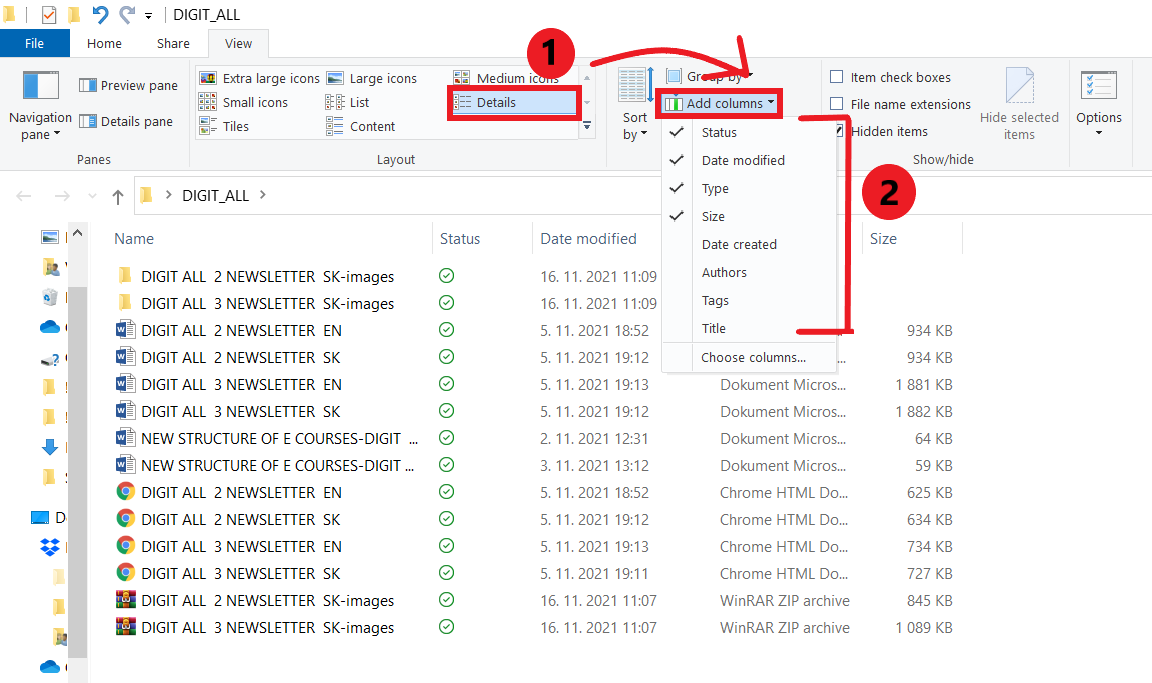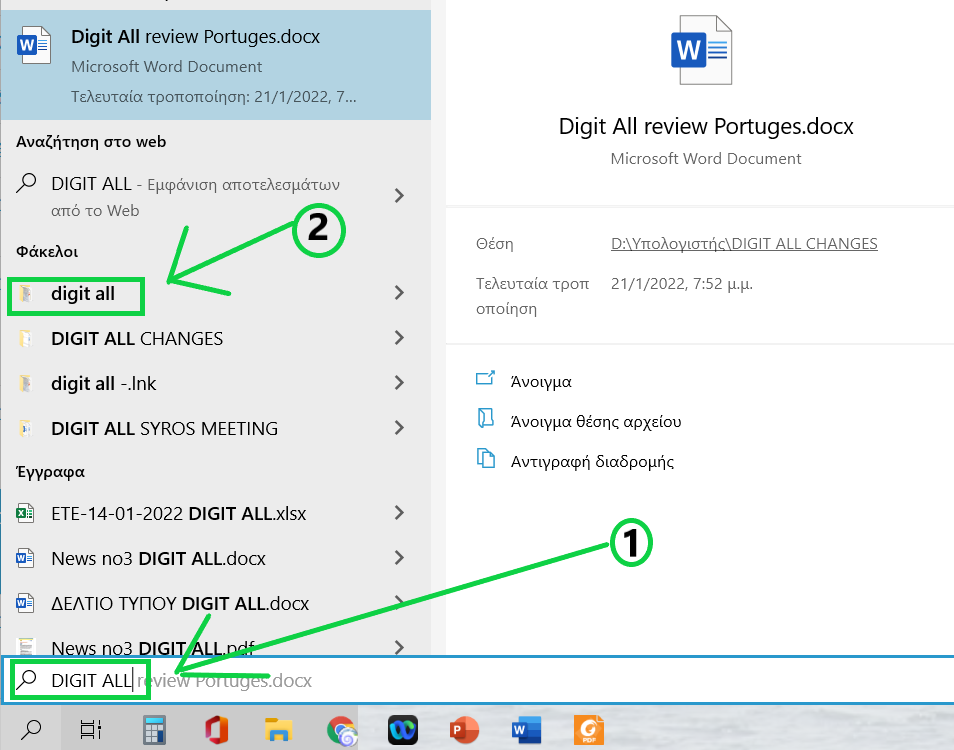3.3 Puedo ver y ordenar los archivos dentro de una carpeta de diferentes maneras
Independientemente de dónde se almacenen los documentos, es importante mantenerlos organizados y actualizados. El objetivo de la gestión de archivos electrónicos es garantizar que puedas encontrar lo que buscas, incluso si lo buscas años después de su creación. La organización adecuada de los documentos digitales es especialmente crítica en un entorno compartido: si uno de tus compañeros se ausenta (temporal o permanentemente) deberías poder localizar fácilmente cualquier documento creado o gestionado por esa persona.
Clasificar y agrupar archivos
En las ventanas del Explorador, los archivos y carpetas aparecen ordenados o agrupados por diferentes atributos, como el nombre o el tipo, en las diferentes vistas, como Iconos (Extra grande, Grande, Mediano o Pequeño), Lista, Detalles, Mosaicos y Contenido).
Ordenar archivos y carpetas
 En el escritorio, haz clic o pulsa el botón Explorador de archivos en la barra de tareas..
En el escritorio, haz clic o pulsa el botón Explorador de archivos en la barra de tareas.. Abre la carpeta que contiene los archivos que deseas ordenar.
Abre la carpeta que contiene los archivos que deseas ordenar. Haz clic o pulsa el botón Ordenar por en la pestaña Ver.
Haz clic o pulsa el botón Ordenar por en la pestaña Ver. Selecciona una clasificación de las opciones del menú.
Selecciona una clasificación de las opciones del menú.

Sort Files and Folders
Click the File Explorer button on the taskbar.
Open the folder that contains the files you want to sort.
Click or tap the Sort by button on the View tab.
Select a sort by an option on the menu.
Options. Select an option, such as name, Date, Size, Type, Date Modified, and Dimensions.
The available options vary depending on the selected folder type.
Ascending. Select to sort items in ascending order A-Z.
Descending. Select to sort items in descending order Z-A.
Choose columns. Select to customize the columns shown in Details view.
View files in different ways
Click the File Explorer button on the taskbar.
Open the folder that contains the files you want to group.
Click the View.
Select a change in views by the option on the menu.
Toolbar menu:
1. Panels
a.Navigation Pane control view of navigation in left sidebar
b. Preview Pane adding sidebar on right to preview files
c. The Details pane is added to the right side of the File Explorer window. to see a file's details
These file management tips will help you keep your files accessible:
1. Use the Default Installation Folders for Program Files
Use the default file locations when installing application programs. Under Windows, by convention application program files reside under the (Drive Letter->Program Files directory. Installing applications elsewhere is confusing and unnecessary.
2. One Place for All Documents
Place all documents under a single "root" folder. For a single user in a Windows environment, the default location is the My Documents folder.2
In a file-sharing environment try to do the same. Create a single root folder (called "Shared Documents" for example) and store all documents in subfolders inside the root folder. Having a single location for all electronic documents makes it easier to find things and to run backups and archives.3. Create Folders in a Logical Hierarchy
These are the drawers of your computer’s filing cabinet, so to speak. Use plain language to name your folders; you don’t want to be looking at this list of folders in the future and wondering what “TFK” or whatever other interesting abbreviation you invented means.
4. Nest Folders Within Folders
Create other folders within these main folders as the need arises. For instance, a folder called “Invoices” might contain folders called “2018”, “2017” and “2016”.
5. Follow the File Naming Conventions
Use descriptive file names for easy identification and retrieval but don't go overboard - file/path names have length limits which vary between operating systems.
6. Be Specific
Give electronic files logical, specific names and include dates in file names if possible. The goal when naming files is to be able to tell what the file is about without having to open it and look.
7. File as You Go
The best time to file a document is when you first create it. So get in the habit of using the "Save As" dialogue box to file your document as well as name it, putting it in the right place in the first place.
8. Back up Your Files Regularly
Whether you're copying your files onto another drive, it's important to set up and follow a regular backup.
Please refer to chapter 1.1.5 in course 1 to find more information on how to back up your files"
You can also select various ways how to display the contents of the folder.

